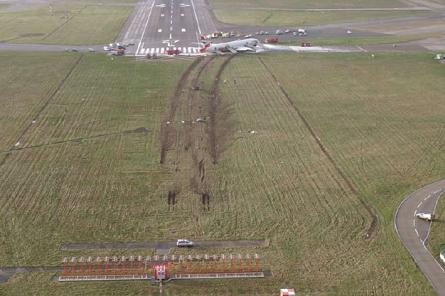Investigators believe the British Airways Boeing 777-200ER which crashed at London Heathrow would have struck the ground earlier, potentially colliding with the instrument landing system antenna, had the pilot not partially retracted the flaps on approach.
The final report into the accident shows that the aircraft's flaps were at 30° before ice flushed through the fuel lines choked off the fuel flow to both engines.
As the aircraft descended to a height of about 240ft, the captain retracted the flaps to 25°. The Air Accidents Investigation Branch concludes that this enabled the aircraft to glide an extra 50m (160ft) before touching down.
"The action of reducing the flap setting was prompt and resulted in a reduction of the aerodynamic drag, with a minimal effect on the aircraft stall speed," it states.
 |
|---|
© Metropolitan Police ASU |
If the twin-jet's flaps had remained at 30°, the AAIB adds, it would have cleared the Heathrow perimeter fence but landed before the ILS antenna, probably resulting in a collision.
"The effects of contact with the ILS antenna are unknown but such contact would probably have led to more substantial structural damage to the aircraft," it says.
Flight BA038 came to rest at the threshold of runway 27L after arriving from Beijing on 17 January 2008. While the aircraft was badly damaged, all of the passengers and crew members on board survived.
Related links:
- Learmount: G-YMMM: could the crew have done any more?
- Rolls-Royce: Trent modification will 'eliminate' fuel-ice risk
Source: Air Transport Intelligence news























